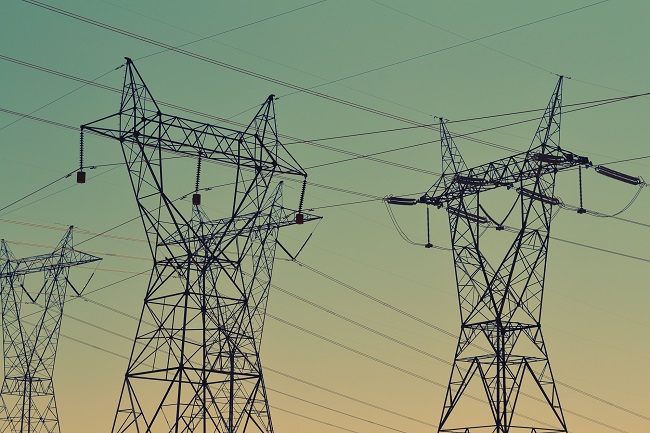by Shane Hurst, Managing Director, Portfolio Manager ClearBridge Investments, Franklin Templeton Investments
Infrastructure has recently seen increased attention as broad equities have been weaker in 2022 due to inflation, rising interest rates, global supply chain disruptions from COVID-19 and the war in Ukraine. Shane Hurst, Portfolio Manager with ClearBridge Investments, discusses the opportunities and potential income benefits for investors in the space today.
With equities weaker in 2022 and trading on fast-moving events, such as the Federal Reserve’s aggressive rate hikes and the war in Ukraine, infrastructure’s long-term proposition has been looking more attractive to investors today. This is because infrastructure returns are driven by investment plans in essential services, which span 10 or more years into the future, and these returns accelerate over time while providing considerable predictability compared to equities.
The relative predictability of infrastructure returns is delivered by regulated and contracted assets, which are our focus as we build infrastructure portfolios. With regulated assets such as water, electricity and gas transmission and distribution, a regulator determines the revenues a company should earn on its assets. Because demand for these assets is steady, and the regulator determines revenue, this mechanism leads to a relatively stable cash flow profile over time. Additionally, regulated assets are often monopolies, are typically defensive, and generate high amounts of income.
We also focus on on user-pay assets, which include airports, ports, rail, toll roads and communication infrastructure. These are long-term concession contracts leveraged to the growth in the underlying economy, which means they are tied to the volume of people and cargo flying, moving through ports and along railways, or using cellular towers.
Infrastructure’s inflation hedge
We believe two key features of infrastructure should interest investors right now. The first feature is its ability to act as an inflation hedge in investment portfolios. Inflation has been running hot globally as the COVID-19 crisis waned and demand for goods and services returned, while supply chains struggled to meet demand. The war in Ukraine gave inflation a further jolt: Europe consumes about 45% of Russian gas, and as Europe and other parts of the world try to wean their way off Russian gas, effectively lowering supply and creating demand, this transition has resulted in an increase in commodity prices.
Commodity inflation has had little impact so far on regulated assets, and infrastructure is typically able to adjust to inflationary environments due to the largely pre-programmed way it builds inflation into regulation and contracts. This applies to both regulated utilities, which regularly reset their allowed returns with regulators to account for inflationary cost increases, and user-pay assets, such as toll roads or rail, as both types of infrastructure generate inflation-linked revenues.
Infrastructure’s pricing power comes from the essential nature of its assets: even at times of economic weakness, consumers continue to use water, electricity and gas, drive cars on toll roads, and use other essential infrastructure services. Just as importantly, the income we look for from infrastructure is underpinned by long-term contracts, which ensure a steady flow of revenue over a long period of time.
The move toward net zero
The second key feature driving interest in infrastructure is its central role in the trend toward decarbonization of the global economy. In our view, decarbonization, or the move toward net-zero carbon emissions, provides strong investment tailwinds for infrastructure. Infrastructure and utilities are at the forefront of this effort and can offer investors a stable return on equity without additional technology risk. Annual power sector capital spending is expected to increase from $760 billion in 2019 to $2.5 trillion (in 2019 dollars) by 2030,1 with approximately half spent on solar, wind and other renewable energy generation and a third spent on modernizing and extending electricity networks.
In an environment where coal plants are being retired or are used far less, and where gas will be used as a transition fuel, more spending must occur in renewables to meet global power demand. In our estimation, spending on wind and solar energy infrastructure needs to accelerate by at least 10 times from current levels, and this capital is expected to flow through to regulated utilities building out these resources.
Electric vehicles are also gaining more widespread consumer acceptance and adoption. By some estimates, around 20% of vehicles sold annually today are electric, and by 2030, that figure is expected to increase to 60%, although figures differ from country to country. Particularly with today’s high fuel prices top of mind for consumers, electric vehicle sales seem likely to continue accelerating.
Global decarbonization may impact other consumer transportation changes. Rising fuel prices and carbon emissions may also affect air travel in the future. For example, airlines could be taxed if flights are too short, making rail and public transit more appealing to some consumers.
And while energy infrastructure pipelines have seen renewed interest as energy security has become a strategic priority (in Europe, for example), midstream pipelines are also beginning to facilitate an energy transition through hydrogen or carbon capture and storage, which are developing technologies that will only have an increasing role in net-zero efforts.
So, there are several areas of infrastructure benefiting from decarbonization tailwinds, not to mention other secular trends like 5G driving investment in communication towers. With infrastructure’s ability to largely pass-through inflation, as well as provide current income, its attractiveness to investors now is no surprise.
There are several ways to invest in infrastructure, and our preference is to focus on a diversified group of large, liquid, and high-quality infrastructure companies around the world. We look for companies with strong, predictable cash flows. We are uninterested in illiquid assets or companies with volatile cash flows, including competitive assets and businesses, which tend to be unregulated and carry commodity price risk. We also see private infrastructure capital continuing to come to listed markets as they seek attractively priced assets for acquisition.
Currently, with more than $300 billion to $400 billion of dry powder—or capital waiting to be invested—unlisted players will benefit the companies in the listed infrastructure universe. These companies sell assets, often non-core or minority interests, for prices in excess of where they are trading. On average, we have seen these sales done at roughly a 30% premium to where they are currently trading or their implicit value within these companies.
In summary, we believe the opportunity set for infrastructure investors is only set to grow and will benefit from a number of powerful drivers, including attractive valuations and potential dividends that income-seekers would find appealing.
To that end, our team has a robust stock selection approach, scouring developed and emerging markets for listed and liquid infrastructure opportunities that we believe are well-positioned to benefit from the all-encompassing, generational move toward decarbonization. Focusing on regulated and contracted utilities and user-pay assets, we aim to deliver stable returns with steady and growing cash flows as well as dividends that increase over time in a low-volatile fashion.
WHAT ARE THE RISKS?
All investments involve risks, including possible loss of principal. Equity securities are subject to price fluctuation and possible loss of principal. Fixed-income securities involve interest rate, credit, inflation and reinvestment risks; and possible loss of principal. As interest rates rise, the value of fixed income securities falls. International investments are subject to special risks including currency fluctuations, social, economic and political uncertainties, which could increase volatility. These risks are magnified in emerging markets. Investments in infrastructure-related securities involve special risks, such as high interest costs, high leverage and increased susceptibility to adverse economic or regulatory developments affecting the sector. In addition to other factors, securities issued by utility companies have been historically sensitive to interest rate changes. When interest rates fall, utility securities prices tend to rise; when interest rates rise, their prices generally fall.
Franklin Templeton and our Specialist Investment Managers have certain environmental, sustainability and governance (ESG) goals or capabilities; however, not all strategies are managed to “ESG” oriented objectives.
IMPORTANT LEGAL INFORMATION
This material is intended to be of general interest only and should not be construed as individual investment advice or a recommendation or solicitation to buy, sell or hold any security or to adopt any investment strategy. It does not constitute legal or tax advice. This material may not be reproduced, distributed or published without prior written permission from Franklin Templeton.
The views expressed are those of the investment manager and the comments, opinions and analyses are rendered as at publication date and may change without notice. The underlying assumptions and these views are subject to change based on market and other conditions and may differ from other portfolio managers or of the firm as a whole. The information provided in this material is not intended as a complete analysis of every material fact regarding any country, region or market. There is no assurance that any prediction, projection or forecast on the economy, stock market, bond market or the economic trends of the markets will be realized. The value of investments and the income from them can go down as well as up and you may not get back the full amount that you invested. Past performance is not necessarily indicative nor a guarantee of future performance. All investments involve risks, including possible loss of principal.
Any research and analysis contained in this presentation has been procured by Franklin Templeton for its own purposes and may be acted upon in that connection and, as such, is provided to you incidentally. Data from third party sources may have been used in the preparation of this material and Franklin Templeton (“FT”) has not independently verified, validated or audited such data. Although information has been obtained from sources that Franklin Templeton believes to be reliable, no guarantee can be given as to its accuracy and such information may be incomplete or condensed and may be subject to change at any time without notice. The mention of any individual securities should neither constitute nor be construed as a recommendation to purchase, hold or sell any securities, and the information provided regarding such individual securities (if any) is not a sufficient basis upon which to make an investment decision. FT accepts no liability whatsoever for any loss arising from use of this information and reliance upon the comments, opinions and analyses in the material is at the sole discretion of the user.
Products, services and information may not be available in all jurisdictions and are offered outside the U.S. by other FT affiliates and/or their distributors as local laws and regulation permits. Please consult your own financial professional or Franklin Templeton institutional contact for further information on availability of products and services in your jurisdiction.
Issued in the U.S. by Franklin Distributors, LLC, One Franklin Parkway, San Mateo, California 94403-1906, (800) DIAL BEN/342-5236, franklintempleton.com – Franklin Distributors, LLC, member FINRA/SIPC, is the principal distributor of Franklin Templeton U.S. registered products, which are not FDIC insured; may lose value; and are not bank guaranteed and are available only in jurisdictions where an offer or solicitation of such products is permitted under applicable laws and regulation.
______________________
1. Source: International Energy Agency Net Zero by 2050, A Roadmap for the Global Energy Sector 2019-2030.















